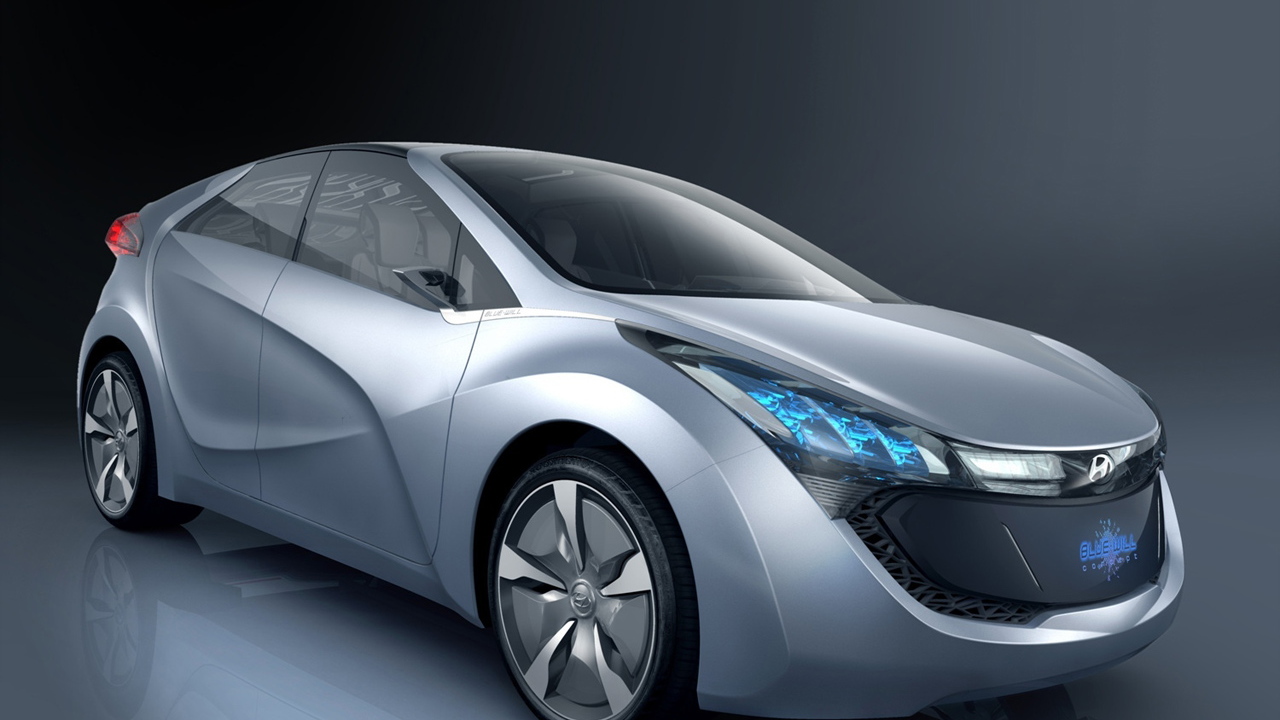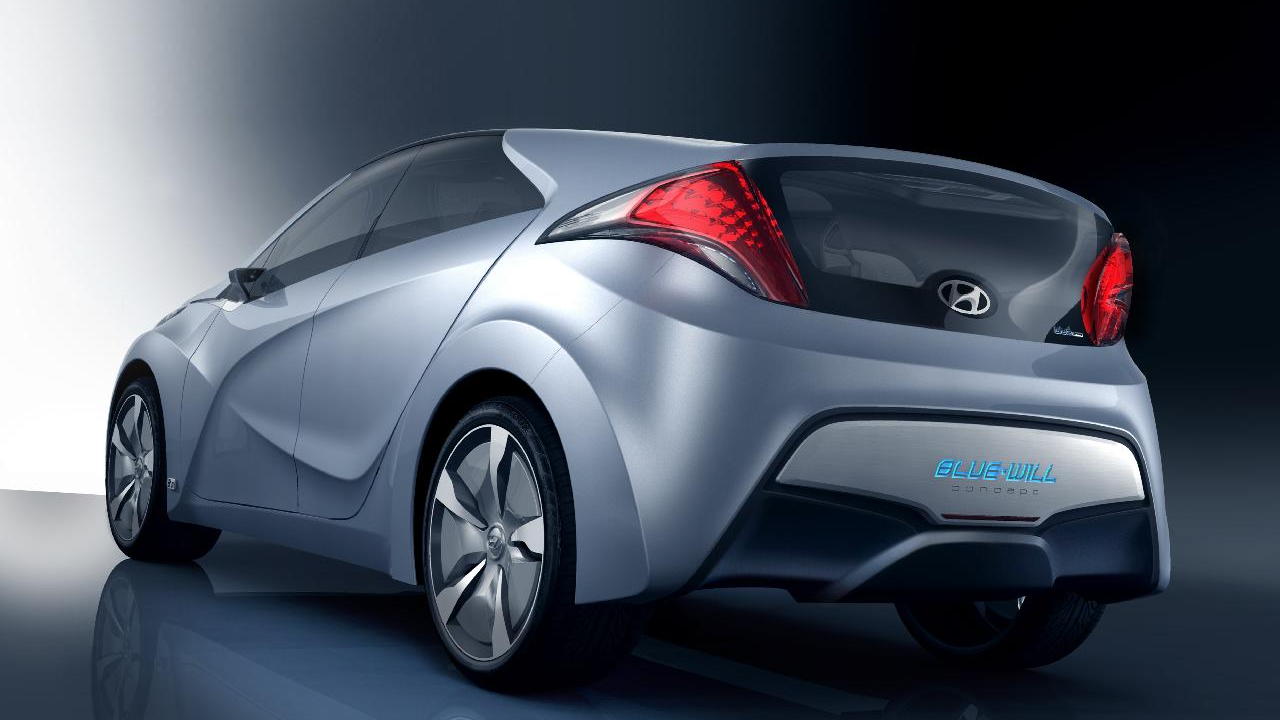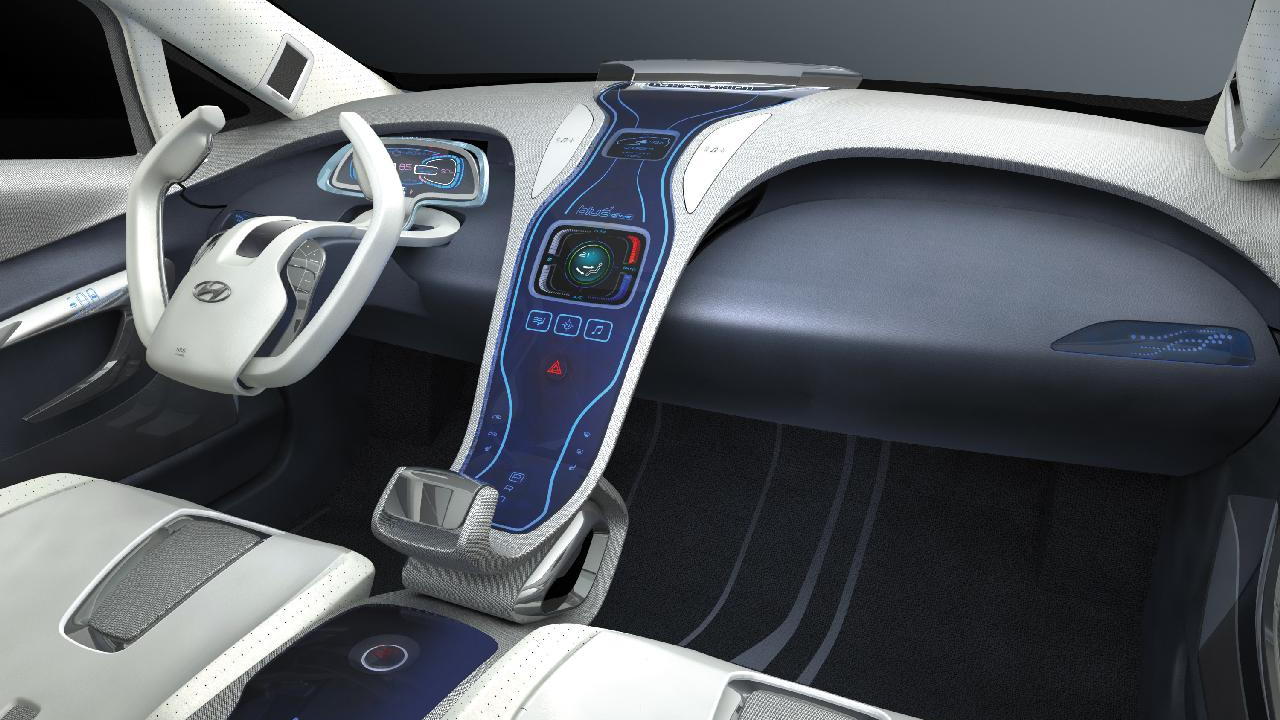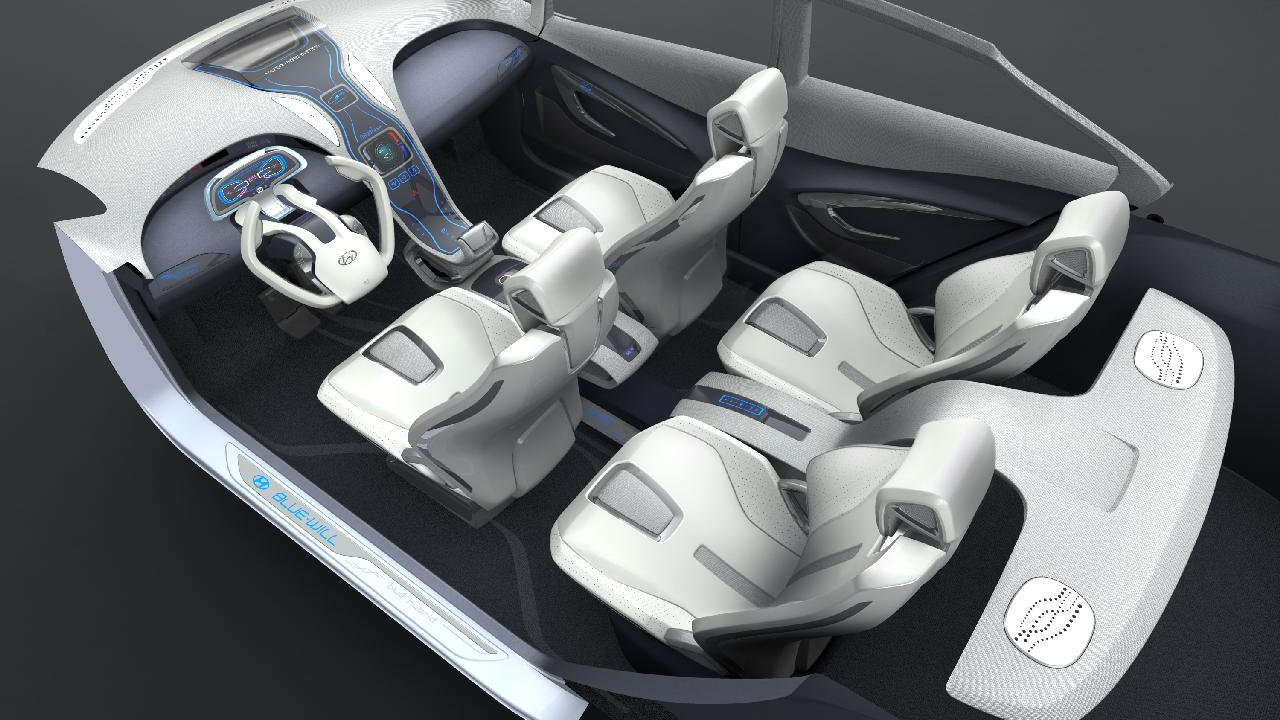We somehow omitted one hybrid concept until now in our 2010 Detroit Auto Show coverage; it's the Hyundai Blue-Will four-door sports sedan, which is unusual in both name and looks.
Some loved it, some loathed it, but we're as interested in its plug-in hybrid powertrain as in the rather nervous collection of swoopy lines Hyundai calls "fluidic sculpture design"--and the constantly changing LED messages where the grille would otherwise be.
"Future production vehicles"
Hyundai calls the Blue-Will concept "a test-bed of new ideas" that "foreshadows future focused hybrid production vehicles"--including the 2011 Sonata BlueDrive hybrid to be unveiled this year, which will be followed late in 2012 by a plug-in hybrid vehicle.
Hyundai has said its plug-in be a dedicated hybrid, using a unique body not shared with any gasoline model. Launched at last year's Seoul Auto Show in April, the Blue-Will serves as the concept for that vehicle; the Detroit Show was its first North American appearance.
40 miles of plug-in range
The Blue-Will offers enough electric range on a single charge--40 miles--for most drivers' daily travels, with much greater range from its gasoline engine. Its lithium-polymer cell technology is lighter than other lithium-ion chemistries, because it uses electrolyte in the form of a solid polymer, rather than a liquid.
This presumably allows Hyundai to use a pack with higher energy capacity than the 4-kilowatt-hour pack Toyota is expected to fit to its 2012 Prius Plug-In Hybrid. The Blue-Will uses a 16-kilowatt-hour the same battery pack (of unspecified capacity), Hyundai says, that is similar to the one that will be used in the hybrid 2011 Hyundai Sonata BlueDrive model.
Last July, Hyundai's domestic-market Elantra LPI Hybrid sedan became the world's first production vehicle to use lithium-polymer cells.
BlueDrive parallel hybrid
Hyundai's proprietary BlueDrive parallel hybrid system has been shown in at least two versions, and will make its first production appearance driving the front wheels of the 2011 Sonata BlueDrive. It operates in roughly the same way as Toyota's Hybrid Synergy Drive: Torque to the drive wheels is provided by the gasoline engine, the electric motor, or both together.
The plug-in version in the Blue-Will consists of a 100-kilowatt electric motor paired with a 152-horsepower, 1.6-liter gasoline-direct-injected engine operating through a continuously-variable transmission (CVT).

Hyundai Blue-Will Concept, 2010 Detroit Auto Show

2009 Hyundai Nuvis concept
An earlier non-plug-in hybrid, shown in the Nuvis concept crossover shown at last year's New York Auto Show, used a 2.4-liter four, a six-speed automatic transmission, and a 30-kilowatt electric motor. That 270-Volt battery pack held 1.4 kilowatt-hours of energy.
That smaller engine ties neatly into Hyundai's Detroit release of new engines for its 2010 Santa Fe, with a high-output four replacing the earlier base V-6. At the Los Angeles Auto Show, Hyundai said the redesigned 2011 Hyundai Sonata midsize sedan would offer only fours.
50 to 100 mpg, BUT ...
The Blue-Will concept's engine efficiency is further improved by a thermal generator, fitted into the exhaust manifold, that recaptures energy from hot exhaust gases and converts it into electrical energy to contribute power to auxiliary systems.
Hyundai quotes fuel economy of 50 to 55 mpg operating as a hybrid, and "more than 100 miles per gallon" as a plug-in hybrid, along with an overall range of 650 miles.
But as we often warn, such numbers are basically meaningless once plug-in recharging is added to a hybrid vehicle. Any such ratings depend heavily on making assumptions about whether the car will be driven in city traffic or at speed, and how often it will be recharged.
Eco-Coach
Like the Cadillac XTS Platinum Concept also shown at Detroit, the Blue-Will uses an ultra-thin, high-resolution Transparent Organic Light Emitting Diode (LED) display to replace the gauge cluster. Like many other concepts and even production cars, Hyundai's "Eco-Coach" software offers continuous feedback on fuel use and driving efficiency, to encourage fuel-saving driving habits.
Other technology features of the Blue-Will include drive-by-wire steering, and roof-mounted solar cells that provide a trickle charge to a cabin ventilation fan--just like the optional solar moonroof on the 2010 Toyota Prius.



















